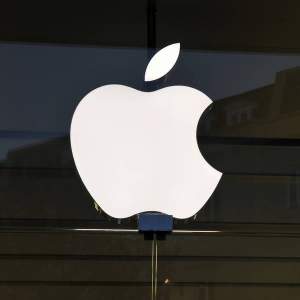
Home » Legal News » Apple Patents Multi-Touch 3-D Applications
Apple Patents Multi-Touch 3-D Applications
October 28, 2011 04:57pm
A new Apple patent reveals the company’s ambition to integrate more gesturing into the iPhone, iPad and other devices produced by the leading tech innovator.
The patent covers a gesture-based editing toolbar for the iPad; it suggests a novel approach to manipulating and controlling media by using gestures in the form nearly everything—shapes, symbols, letters or even user-created patterns.
The patent reveals a menu of selected gestures for a number of actions, including facial recognition, creating associations among objects and pointing—thinks Tom Cruise operating the holographic glove-controlled crime-fighting system in Minority Report.
The patent labels a master table of gestures that is not latent in the patent documentation; however, it seems that a user will be able to create new gestures, raising an extensive freedom for use.
The premise of the patent is gesturing by making motions with hand movements or fingers across a multi-touch screen. The patent also mentions 3-D gesturing using the device’s front-facing camera.
Comments
Must Read
 3 Provisions of the Paris Convention Treaty
3 Provisions of the Paris Convention Treaty The Paris Convention for the Protection of Industrial Property created the first intellectual property treaties, which was signed on March 20, 1883.
 3 Ways Of Patent Misuse You Must Know
3 Ways Of Patent Misuse You Must KnowOut of the possible defense strategies that can be considered during a patent infringement case and litigation, patent misuse can be considered the most powerful and assertive patent infringement defense.
 A Background to the Patent Cooperation Treaty
A Background to the Patent Cooperation TreatyIntellectual property is a concept that is highly regarded and protected in the United States.
 A Brief Guide to the The Paris Convention
A Brief Guide to the The Paris ConventionThe Paris Convention Formation of the Paris Convention:Invention exhibitions were a relatively new type of event, which began in the 19th century as a result of the Industrial Revolution.
 A Brief History of the Exhaustion Doctrine
A Brief History of the Exhaustion DoctrineThe so-called exhaustion doctrine pertains to the scope of intellectual property rights after the item in which they are embodied is sold.
 A Brief Overview of Patent Protection
A Brief Overview of Patent ProtectionPatent protection is vital to the economic growth and technological advancement of the United States.
 A Short Background of the Patent Act of 1952
A Short Background of the Patent Act of 1952Patent law in the United States currently exists as provided for by the legal basis of the United States Code.
 Accelerated Examination of Patents
Accelerated Examination of PatentsThe process of patenting a new idea for a device or process in the United States can be an involved and procedurally difficult task.
Tips
